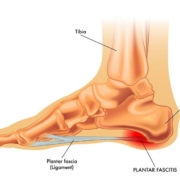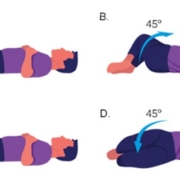5 Simple Ways to Enhance Your MSK Health at Home
In our fast-paced lives, it’s easy to overlook the importance of maintaining our musculoskeletal (MSK) health. Whether you’re working from home, juggling family responsibilities, or simply navigating daily routines, the state of your muscles and joints can substantially impact your overall well-being. Fortunately, enhancing your MSK health doesn’t require a gym membership or a complete lifestyle overhaul.In this listicle, we’ll explore 5 simple yet effective ways to boost your musculoskeletal health right from the comfort of your home.from easy stretches to mindful movement practices, you’ll discover practical strategies that can definitely help alleviate discomfort, improve versatility, and promote strength. So, let’s dive in and empower ourselves with the tools to nurture our bodies and enhance our quality of life!
1) Prioritize Daily Stretching: Incorporating a few minutes of stretching into your daily routine can significantly improve flexibility and reduce muscle tension. Focus on major muscle groups and consider using guided videos to explore new techniques
Incorporating a few minutes of stretching into your daily routine can work wonders for your overall musculoskeletal health. Flexibility is crucial for maintaining mobility and preventing injuries, especially if you lead a sedentary lifestyle. To get started, focus on major muscle groups such as your neck, shoulders, back, hips, and legs. You can create a simple stretching routine that includes a variety of movements, such as:
- Neck Rolls: Gently roll your head to relieve tension.
- Shoulder Shrugs: Lift your shoulders toward your ears and release.
- Hamstring Stretch: Reach for your toes while seated to elongate your legs.
- Cat-Cow Stretch: Alternate between arching and rounding your back to enhance spine flexibility.
To keep your stretching routine fresh and effective, consider using guided videos that introduce new techniques and variations. This not only helps you explore different stretches but also ensures that you are performing them correctly to maximize their benefits. You can even track your progress by creating a simple table to note down your daily stretching sessions, including:
| Date | Duration (minutes) | Muscle Groups Targeted |
|---|---|---|
| Monday | 10 | Back, Legs |
| Tuesday | 15 | Shoulders, Neck |
| Wednesday | 10 | Full Body |
By consistently prioritizing stretching, you can not only enhance your flexibility but also promote relaxation and reduce muscle tension. Make it a part of your daily ritual, and you’ll likely notice improvements in your overall comfort and physical performance.
2) Invest in Ergonomic Furniture: Evaluate your workspace and consider upgrading to ergonomic chairs or desks. Proper alignment while sitting or standing can prevent strain on your muscles and joints, promoting better posture and overall musculoskeletal health
Transforming your workspace with ergonomic furniture can be a game-changer for your musculoskeletal health. by investing in ergonomic chairs and desks, you create an environment that supports your body’s natural alignment.look for features such as adjustable height settings, lumbar support, and a design that encourages movement. These elements not only promote better posture but also reduce the risk of discomfort and fatigue during long hours of work. When your body is properly supported, you can focus more on your tasks and less on the aches that often accompany poor seating arrangements.
To make informed choices about your ergonomic upgrades, consider evaluating the following aspects of your current setup:
| Aspect | Current Setup | ergonomic Upgrade |
|---|---|---|
| Chair Height | Too high/low | Adjustable height |
| Desk Height | Fixed | Height-adjustable |
| Lumbar Support | None | Built-in support |
| Monitor Position | Too low/high | Eye level |
By addressing these key areas, you can significantly enhance your comfort and productivity.Remember, the goal is to create a workspace that not only looks good but also feels good, allowing you to thrive in your daily activities while safeguarding your musculoskeletal health.
3) Stay Hydrated: Water plays a crucial role in maintaining joint lubrication and muscle function.Aim to drink enough water throughout the day, especially before and after physical activity, to support your body’s natural processes
Staying hydrated is essential for optimal musculoskeletal health. Water is not just a thirst quencher; it plays a vital role in ensuring that your joints remain well-lubricated and your muscles function efficiently. When you’re adequately hydrated, your body can better manage the physical stresses placed upon it, reducing the risk of injury during activities. To make hydration a daily priority, consider keeping a water bottle within arm’s reach and setting reminders on your phone to drink regularly. This simple habit can significantly enhance your overall well-being.
To further emphasize the importance of hydration, here are some tips to help you maintain your fluid intake:
- track Your Intake: Use an app or a journal to monitor how much water you drink each day.
- Flavor It Up: If plain water isn’t appealing,infuse it with fruits or herbs like lemon,cucumber,or mint.
- Hydrate with Food: Incorporate water-rich foods into your diet, such as cucumbers, watermelon, and oranges.
- Drink Before Meals: Make it a habit to drink a glass of water before each meal to boost hydration and aid digestion.
4) incorporate Strength Training: Engaging in regular strength training exercises can enhance muscle tone and support joint stability. Use bodyweight exercises or resistance bands to safely build strength in the comfort of your home
Strength training is an essential component of maintaining musculoskeletal health, and the great news is that you don’t need a gym membership to reap its benefits. By incorporating bodyweight exercises or resistance bands into your routine, you can effectively build strength while enhancing muscle tone and supporting joint stability. Consider starting with exercises such as:
- Push-ups: Great for upper body strength.
- Squats: Excellent for lower body and core stability.
- Planks: Fantastic for core strength and endurance.
- Resistance band rows: Perfect for back and shoulder muscles.
To help you structure your workouts, here’s a simple weekly plan that you can follow at home. This table outlines a balanced approach to strength training, ensuring you target different muscle groups throughout the week:
| Day | Focus Area | Suggested Exercises |
|---|---|---|
| Monday | Upper Body | Push-ups, Resistance Band Rows |
| Wednesday | Lower Body | Squats, Lunges |
| Friday | Core | Planks, Dead Bugs |
By committing to this routine, you’ll not only improve your strength but also boost your overall well-being. Remember to listen to your body and adjust the intensity as needed, ensuring a safe and effective workout experience in the comfort of your home.
5) Practice Mindfulness and Relaxation: Stress can contribute to muscle tension and pain. Explore mindfulness techniques such as meditation, deep breathing, or yoga to help manage stress levels and promote relaxation, benefiting your overall musculoskeletal health
Incorporating mindfulness practices into your daily routine can significantly alleviate stress and its physical manifestations, such as muscle tension and pain. Techniques like meditation, deep breathing, and yoga not only enhance mental clarity but also promote a sense of calm that can ripple through your entire body. For beginners, starting with just a few minutes each day can yield noticeable benefits. Consider setting aside time in the morning or evening to engage in these practices, allowing your body and mind to unwind and recharge.
To make mindfulness more accessible, you can create a simple schedule that includes various relaxation techniques. Here’s a quick reference table to help you get started:
| Technique | Duration | Benefits |
|---|---|---|
| Meditation | 5-10 mins | Reduces anxiety, enhances focus |
| Deep Breathing | 3-5 mins | Promotes relaxation, lowers heart rate |
| Yoga | 15-30 mins | Increases flexibility, relieves tension |
By regularly practicing these techniques, you can cultivate a more serene environment for your body to thrive. The key is consistency; even a few mindful moments each day can lead to improved musculoskeletal health and a greater sense of well-being.
Key Takeaways
As we wrap up our exploration of five simple ways to enhance your musculoskeletal (MSK) health at home, remember that small, consistent changes can lead to significant improvements in your overall well-being. Whether it’s incorporating gentle stretches into your daily routine, investing in ergonomic furniture, or prioritizing hydration, every step you take contributes to a healthier you.
Embrace these strategies and make them a part of your lifestyle, allowing your body to thrive in the comfort of your own space. Your musculoskeletal health is the foundation of your mobility and vitality, so take the time to nurture it. Here’s to a more active, pain-free future—one simple change at a time!










Leave a Reply
Want to join the discussion?Feel free to contribute!